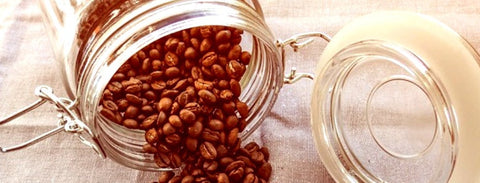First, many thanks to our esteemed customer from Minnesota who asked the question on our Facebook Page a while back.
And why is there static anyway? Most grinders have a plastic chamber. Since plastic is a poor conductor, the electric charge does not dissipate promptly from the grind. This is especially true on a dry day, as noticed by our customer.
Our esteemed Master Roaster Amanda provided the simplest solution: Give it time. Wait about 5 minutes before opening (this varies depending on ground coarseness). Also, tapping the grinder gently on the counter can dislodge statically charged grounds from the grinding chamber walls.
Another trick consists in adding moisture. Simply wet a piece of paper towel or clean rag and squeeze 3 to 4 drops, no more, over the beans in the hopper. Then grind. Static be gone. You can also spray a few squirts of water inside the grinder before pouring in the coffee beans.
Here’s another strategy that also adds delicious flavor to your brew. If you like cinnamon in your coffee, add it to the whole beans in your grinder, and grind away. Cinnamon does not behave the same way as the coffee grounds in the presence of an electric charge and may help cancel out the static.
Finally, if you experiment with different types of coffees and Coffee Blends, you may find that some produce less static than others. This, as you may have guessed, is because different roasts or blends of beans will contain more or less oils than others. Perhaps your grinder can become your guide, nudging you to explore different coffees as you search for the least static grind.





Comments (0)
There are no comments for this article. Be the first one to leave a message!